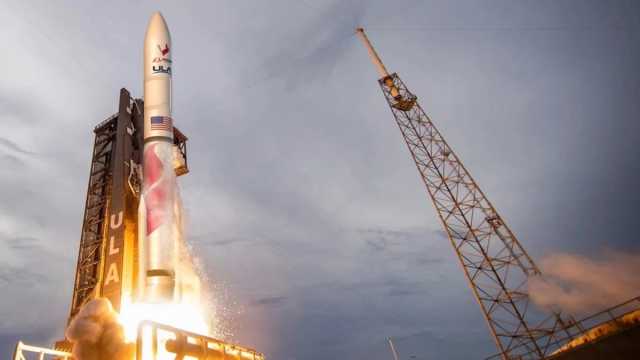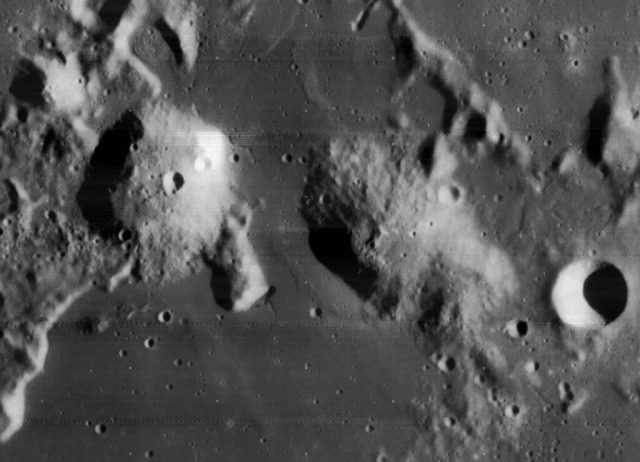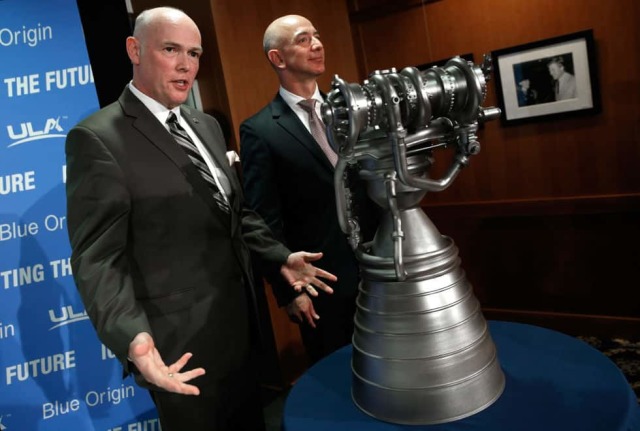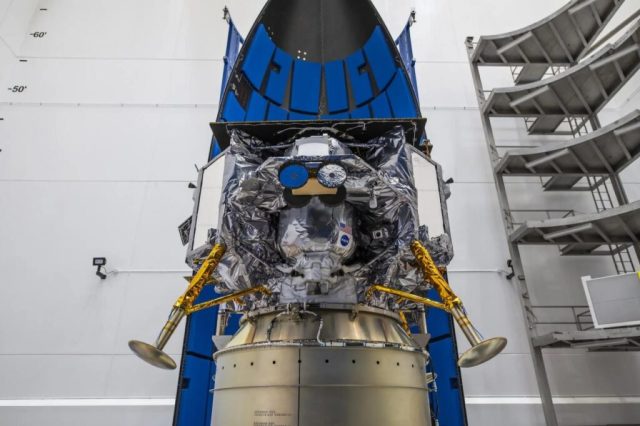Even before the first flight, the Vulcan rocket received 70 firm orders for future launches, more than anyone else in history. A private lander went on board to the Moon, which will hold the first "soft" funerals of people in history there. By the way, Indian tribes that deify the Moon have already sent a protest to NASA demanding that the flight be stopped. What will it actually be? Does SpaceX finally have at least one serious competitor — or is this just an overly ambitious hearse that is taking Boeing and Lockhid Martin, behind Vulcan, to the cemetery?
At 10.18 a.m. on January 8, 2024, a Vulcan rocket took off into the sky — as many believe, the main competitor of SpaceX rockets in the foreseeable future. Confidence in its success was so high that instead of the usual layouts, a valuable mission of the private space company Astrobotics was launched on it. We are talking about an apparatus for landing and research on the surface of the Moon, such as the Russian Luna-25 that crashed last year. The United States has not planted anything on Selenium for longer than even our country — that is, we are talking about a fairly significant launch. How successful will the new rocket be and what results can we expect from its first mission?
Modern space is increasingly monopolized. For example, in 2023, out of 221 human space launches, 96 were carried out by just one company: SpaceX (more than 43 percent). That is, it alone has produced one and a half times more launches than a country like China (which also has its own private space companies), and five times more launches than a country like Russia.
At the same time, it must be understood that all these results were achieved by Elon Musk's company on a relatively old rocket, the Falcon 9, which has only partial reusability. Considering that the more fully reusable and therefore cheaper Starship, which reached space last year, will soon switch to regular flights, the future of the space industry looks quite clear. Realistically speaking, SpaceX will launch more rockets in the coming years than the rest of humanity combined. And this state of affairs will continue for the foreseeable future.
There are those who have accepted this and do not plan to fight for anything — for example, Roscosmos. But there are also players who, at least outwardly, are still fighting against monopolization. Today, the largest of them is the United Launch Alliance, an alliance of space launch units of Boeing and Lockheed Martin. Once sworn competitors, they are now doing everything possible to create a carrier that could compete with SpaceX. Their previous rockets — Atlas V and Delta IV Heavy — were obviously not suitable for this, because they took cargo into space more expensive even than Roscosmos rockets, not like the Falcon 9.
Therefore, two American technology giants have been developing a new Vulcan rocket for almost a decade. With a height of 61.6 meters, a diameter of more than 5.4 meters, it weighs 546.7 tons. The first stage of the rocket uses oxygen-methane BE-4 engines, the second uses oxygen—hydrogen RL-10 engines-veterans who first reached space in 1963, more than 60 years ago. Up to six solid—fuel boosters can be positioned around the first stage, with which the rocket is capable of putting up to 27 tons of cargo into orbit - noticeably more than the Falcon 9 (17.6 tons in the standard reusable version).
Marc Pelier, vice president of the United Launch Alliance, calls Vulcan "the epitome of the company's future." He is confident: "The system that we have developed and are about to launch actually gives us a very bright and prosperous future for many, many years to come."
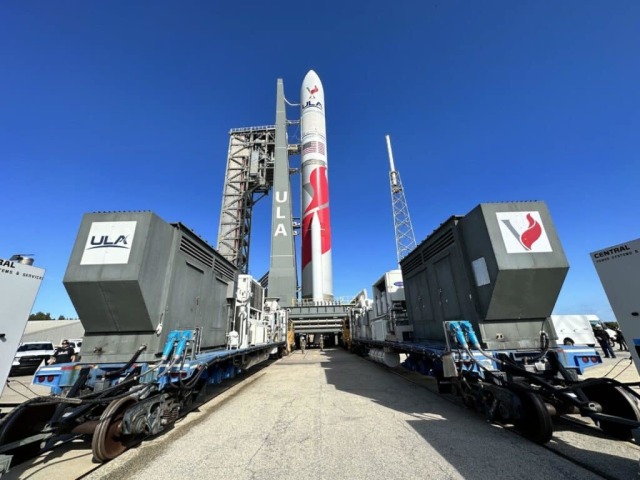 |
| Vulcan has its own mobile transportation platform. |
| Source: Wikimedia Commons |
With the "incarnation", he does not exaggerate: if before SpaceX his company received sums many times higher than the market for its launches (plus a subsidy of one billion dollars), then after Elon Musk forced the US military to actively buy their cheaper launches, the position of the United Launch Alliance became quite shaky. Of course, the military will still support "their little man" in the business world, since many high-ranking people from the US Department of Defense leave after retirement for an unencumbered, but very highly paid sinecure at Boeing or Lockheed Martin. But because of Musk's lawsuit, United Launch Alliance could not afford too many such launches of "the right people". To change the situation, a new, cheaper rocket was needed. Now, as Pelier believes, the company has it.
But is everything really so wonderful?
"A soft funeral"
In this sense, the mission that took off on board the first Vulcan launch looks quite symbolic. It is called Peregrine Mission One and represents the symbolic return of the United States to the moon. This is a very important moment for the United Launch Alliance: if everything goes smoothly, it will be able to show its involvement in a very important matter.
From a scientific point of view, the landing site of the Peregrine lunar vehicle — the Gruytuizen crater, near the Gruytuizen dome — is very interesting. According to NASA, there is a dome in this place — a structure of volcanic origin consisting of silica magma that once poured out of the bowels of the Moon and solidified in the form of a "dome" with a diameter of 20 kilometers and a height of up to one and a half kilometers.
The mystery of this "dome" is that on Earth, silica magmas are formed only in places where large masses of water come into contact with the joints of moving tectonic plates. As Naked Science has repeatedly written, NASA proceeds from the outdated monoimpact hypothesis of the formation of the Moon, in which the presence of large volumes of water there is excluded. Especially in the depths of the satellite, from where magma rose, forming the Gruituizen dome . Therefore, this education looks mysterious to the Agency. Peregrine has a number of instruments on board (including a neutron spectrometer), which allows us to obtain fairly accurate data on the composition of rocks in the area.
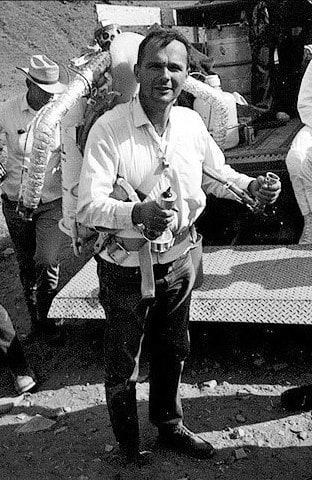 |
| Eugene Shoemaker, discoverer of the Shoemaker—Levy comet, the first man buried on the moon. |
| Source: Wikimedia Commons |
In addition to the scientific load on board the device, there is also a commercial one — from the companies Elysium Space and Celestis. They are engaged in so-called "funerals in space." The ashes of people burned on Earth are supposed to be delivered to the Moon. So far, only one person has been buried there — Eugene Shoemaker, a scientist who has done a lot to study the geology of other celestial bodies. It was in 1998, and the burial was "tough": the NASA spacecraft with the scientist's ashes deliberately hit the surface of Selena. Now we are talking about a "soft funeral", and not of a planetary scientist, but simply of those who paid for it.
This commercial activity has upset the Navajo, one of the major Native American peoples of the modern United States, a lot. They even sent a letter to NASA asking them to cancel the mission. In traditional Navajo beliefs, the moon is sacred, and burial on sacred ground is considered unacceptable in many cultures. In 1998, they already protested against Shoemaker's funeral on this celestial body — and then NASA promised to consult with them at a new funeral, but, as we can see, they did not keep the promise.
Let's put aside commerce and beliefs: Peregrine can really collect interesting information, since the device is likely to find traces of water in local igneous rocks. Ultimately, such observations will form a picture incompatible with the mega-compact theory of Moon formation (the Theia hypothesis), but quite compatible with the multi-compact theory.
 |
| The head of the Navajo tribe, Buu Nygren, who sent NASA a letter demanding that the mission to the moon be stopped because of its funeral aspect. |
| Source: Wikimedia Commons |
But in a symbolic sense, this mission may indicate the future of its launch vehicle. It is very likely that the novelty will not have the prosperous future that the vice president of the United Launch Alliance spoke about - but rather a soft funeral. What exactly is it about?
Is a carriage built in the age of automobiles good?
The Vulcan rocket is so traditional in architecture that it could easily have been created in the 1960s, and not in the 2020s. She has only a couple of engines in each of the stages — that is, they basically cannot be put on the tail. Only stages with multiple engines are suitable for this: accurate dosing of the landing pulse with a small number of engines is difficult, because they are very difficult to get to work at low power. And at high power, you can't put the step back: there is very little fuel in it, it's like an empty soda can, it's just too light.
Actually, the most technically new in it are mainly oxygen-methane BE-4 engines. Created by Blue Origin, they use fuel that previously "flew into space" only on board Starship and one Chinese low-fuel rocket. The United Launch Alliance even plans to "save" these engines in the future. Just not by landing the steps, but by catching them with a helicopter: after testing the first stage, rocket engines will shoot back from it and descend on an inflatable "shield"-a parachute. This technology is still only on paper and looks questionable in implementation. Therefore, the company acts wisely when it does not plan to implement it in the coming years.
Nevertheless, the United Launch Alliance promises to implement it in the distant bright future, which, according to its experts, will reduce the cost of the first stage three times in comparison with its disposable version.
It follows that Vulcan missions will be only slightly more expensive than those of Falcon 9. An American court may prohibit local military personnel from paying ULA several times more expensive than SpaceX, but it will not be able to prevent United Launch Alliance from paying, say, one and a half times more than Elon Musk's company. Given the mutually beneficial ties between the US military and Vulcan manufacturers described above, it is obvious that this missile should have some kind of earnings.
Or not?
The fact is that Vulcan began to be developed in the era when the Falcon 9 had just begun to put its first stages on the tail. The development was going on with a great creak and those managers who stood at its beginning had already left their seats. Moreover, the owners of the United Launch Alliance turned out to be no more stupid than their hired managers, and they also want to leave, abandoning the newly created rocket. They have already put the company up for sale and, according to rumors, expect to announce who bought it from them after the successful launch of Vulcan. Possible buyers include Jeff Bezos, the owner of Amazon and Blue Origin.
And if you think about it, the behavior of managers and owners fleeing from the United Launch Alliance ship is more than understandable. It's all about the numbers: The Falcon 9 flies for no less than fifty million dollars. Vulcan uses low-burn stages and accelerators, that is, it will obviously be no cheaper than $ 70-80 million per launch in the most optimistic case.
Starship, which replaces the Falcon 9, will cost about $200 million even when built. Given the multiple missions for each of its missiles, its regular launches in the 2020s are unlikely to be more expensive than $10 million apiece. The final goal of the Mask is "flight at the price of fuel", that is, such reusability, in which the main part of the price will fall on fuel. In this case, the realistic launch price is a couple million dollars. And this is with a payload of not 27 tons, as with Vulcan, but at least 100 tons (and 150 tons in the second stage).
In other words, in the 2020s, SpaceX will begin to launch cargo into space at $ 100 per kilogram, and in the future it may increase this amount to $ 20 per kilogram. On Vulcan, this figure can never fall below $3,000. The Pentagon will not be able to buy an American ship, which means that sooner or later it will take away from the local military the opportunity to buy any significant number of launches of the company.
That is, Vulcan's goal is not to lead the United Launch Alliance to a "bright and prosperous future." The idea is to provide this project with a soft funeral: selling the Alliance before regular Starship flights begin is the only way to get at least some money for it. Boeing and Lockheed Martin want to sell the unkillable bear in the face of their joint venture because they know that he does not have much time left to live.
Alexander Berezin
